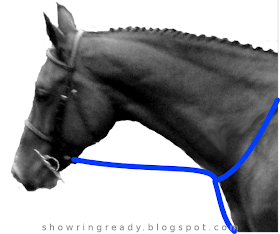If you cannot bring your own hay or shavings to a horse show that provides stabling, you can buy them there instead (beware, however, of the horse show mark-up!). In order to simplify life, you can pre-order them on your stall request form. There should be a section on the form that will allow you to specify a number of hay bales and/or bags of shavings to split amongst your stable. If they will not be used for every horse in the barn, changes to the bill split can be made in the office (do this earlier in the week, not on the last day of the show).
There are several reasons for you to pre-order them instead of ordering when you arrive at the show:
- It's one less thing to stress about as you move in
- They will be there waiting for you (either all in one of your stalls or outside of your stabling area) when you arrive so that you can bed the stalls and feed the horses immediately
- It allows you to do the math of how many to order at home when you still have the ability to think straight
- It avoids the problem of either running around trying to find the delivery person who is not aware that your newly-made order is urgent, or discovering that it is too late in the day when you arrive and the delivery person has gone home
If you pre-order, it is safe to assume that any piles of hay or shavings that you find in your stalls upon your arrival belong to you. If you do not find any hay or shavings in your stalls but you have pre-ordered, check the area outside of your stalls. If they are left outside, the delivery person will usually leave a receipt tucked in the pile in order to identify the owner, so make sure that any receipt that you find matches your name before taking possession of anything.
If you have pre-ordered but do not find any hay or shavings near your stalls, keep an eye out for the delivery tractor as you unload your horses. If it is still early in the day and you see that the tractor appears to be busy, it is safe to assume that they are busy with deliveries and simply haven't gotten to yours yet. If you see that the tractor is quiet and others seem to have received their orders, it's time to go to the office to inquire about your order. Sometimes orders do get lost, either missed on your stall form or overlooked by the delivery person. If there are lots of orders still being delivered, it probably isn't worth bothering anyone about yours just yet.
If you have room in your trailer, bringing your own hay and shavings can be worth it because those at the show tend to cost at least twice as much as they would cost elsewhere.










